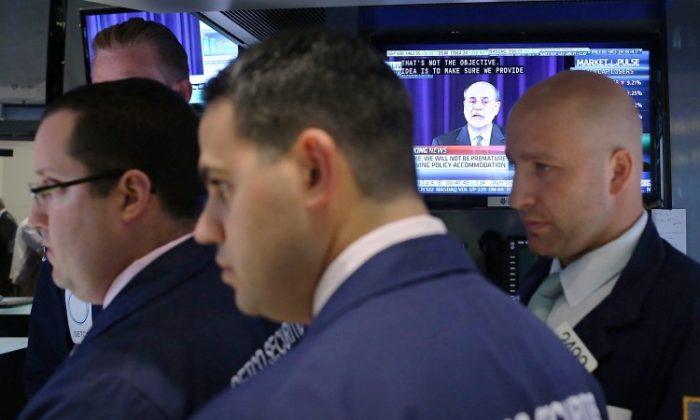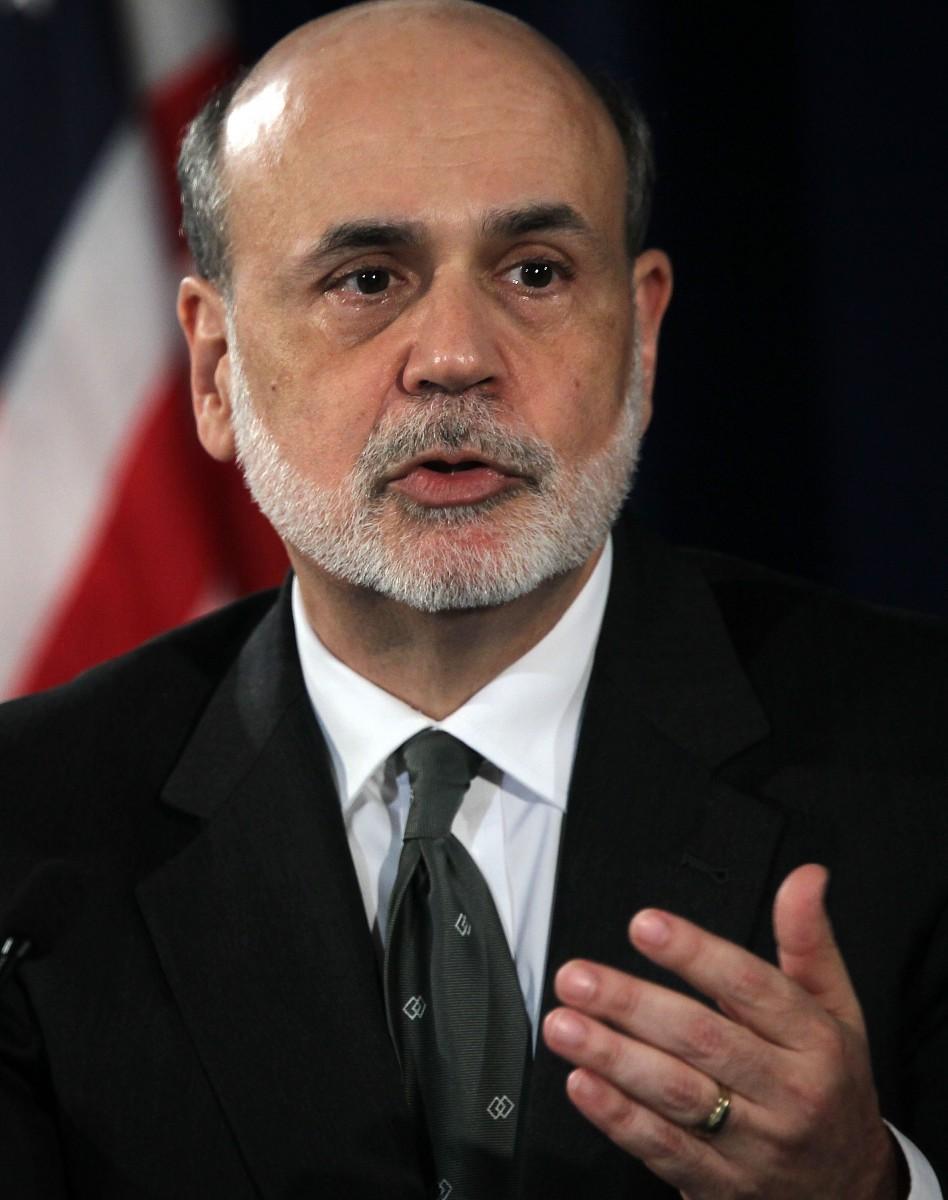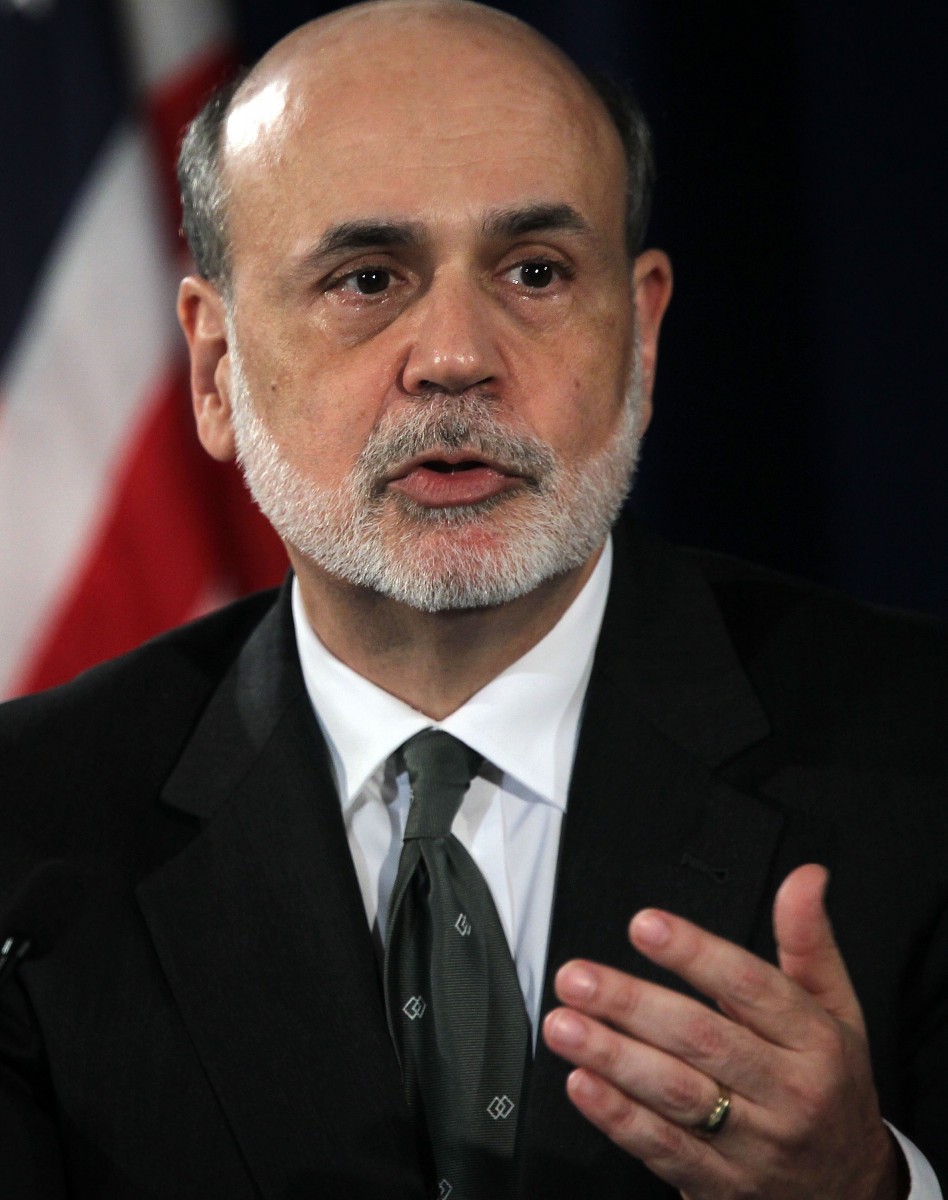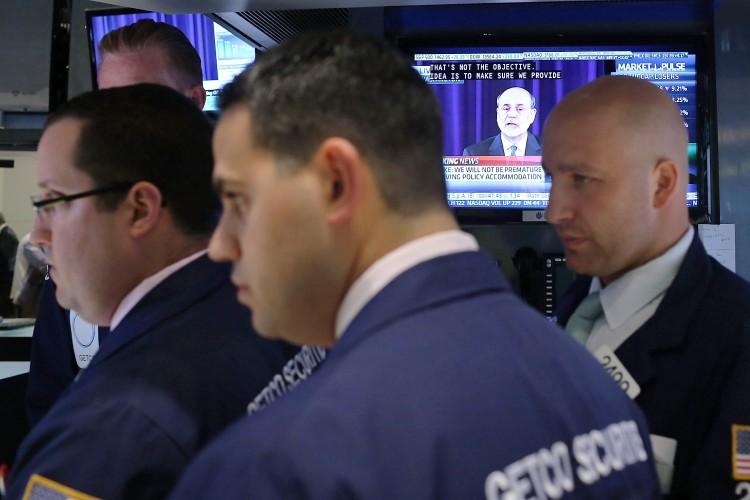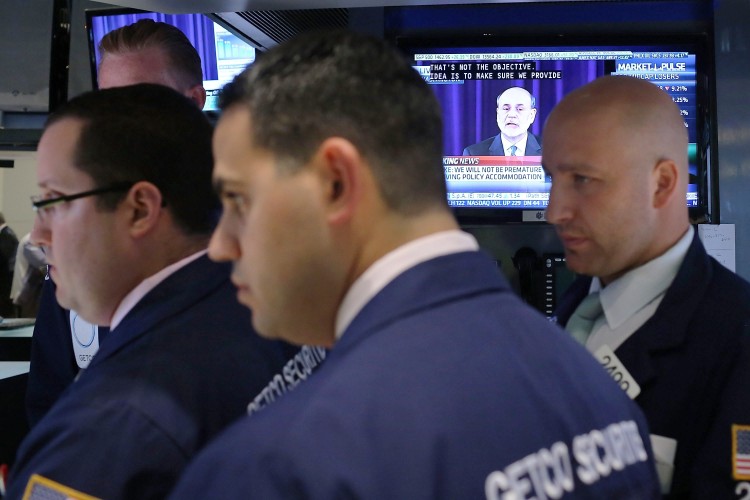The Federal Open Market Committee (FOMC) launched a new round of quantitative easing (QE) Thursday, dubbed QE3. The Federal Reserve will buy up to $40 billion of mortgage-backed bonds per month in order to boost the housing market and increase employment.
The market was asking for it and the Fed did not disappoint. “The Committee agreed today to increase policy accommodation by purchasing additional agency mortgage-backed securities at a pace of $40 billion per month,” reads the Fed’s press release. In addition, the FOMC guaranteed a federal funds rate of 0–0.25 percent until mid-2015, an extension from the previous target of 2014. Furthermore, the Fed will continue the so-called Operation Twist program until the end of the year as planned, in which the bank sells shorter term securities and uses the proceeds to buy longer term securities for a total consideration of $667 billion.
Markets rallied right after the announcement. The Dow jumped 84 points the minute the release hit the wire and extended the gains to close at 13,539, up 206 points or 1.55 percent—a level not seen since the end of 2007. Treasury yields declined, but gold was the outperformer, rising $26 to $1,750 right after the announcement. Gold was up 2 percent at $1,769 at 5:30 p.m. Thursday. The euro also rallied, rising 0.65 percent to $1.2986, as of Thursday 5:30 p.m.
Should these measures not be enough, the Fed stands ready to act to improve employment without jeopardizing price stability: “If the outlook for the labor market does not improve substantially, the committee will continue its purchases of agency mortgage-backed securities, undertake additional asset purchases, and employ its other policy tools as appropriate,” which in practice would mean monetizing more treasury bonds. All of the 12 committee members apart from Jeffrey M. Lacker from the Richmond Fed voted for the policy.
Employment Primary Concern
The press release makes it clear that the Fed’s primary reason for undertaking another round of asset purchases is the persistently high employment rate, currently at 8.1 percent. Chairman Bernanke affirmed at the press conference that “this is a main street policy… the objective here is to create jobs” and that inflation expectations remain “well-anchored,” so consumers and producers don’t have to worry about price increases.
Many market participants find these assumptions surprising, however, as the labor department’s seasonally adjusted index for producer prices climbed 1.7 percent in August alone, the biggest increase in three years. The Bureau of Labor Statistics will release the consumer price data for August today. July saw a modest 0.3 percent increase from the month before.
Market Thinks Inflation a Risk
David MacEwen, chief investment officer for fixed income products with American Century Investments who helps oversee $123 billion in assets said in an interview that arguing for well anchored inflation expectations seems “a bit of a stretch.” He looks at the market for Treasury inflation protected securities (TIPS) and says that their yield difference compared to normal Treasurys is much higher than during previous QE announcements.
“It’s a lot higher than where actual real inflation is in the market right now, there is some legitimate risk of inflation expectations [increasing] due to QE.” He thinks investors are hedging and diverting some of their assets into TIPS and gold for that reason.
John Williams is a veteran consultant economist and runs ShadowStats.com, a newsletter service that provides clients with alternative measures of inflation, unemployment, and other statistics. He says “[QE] is the unhappy type of inflation, the one that drags you into ruin,” compared to demand driven inflation that comes from an expansion in real economic activity.
His research shows that increasing the money supply with QE leads to a decline in the dollar’s value, simply due to supply and demand dynamics. Currency investors sell the dollar in favor off the Yen, the euro, and other currencies, increasing their value in terms of dollars. Since oil, gold, and most other commodities are priced in dollars, holders of other currencies can then procure them at a discount.
This market gap can be exploited through a process called arbitrage, thereby increasing the dollar price of commodities to remove the discount in other currencies. “In the U.S. we don’t get the discount, we get penalized, and we are paying in dollars where prices are going up,” says Williams.
In addition, commodity producers will simply charge more, knowing that there is demand in the market that can afford higher dollar prices. This leads to rising input costs in the United States, which feeds through to consumer prices. His alternative measure of inflation, which uses the official calculation methodology from 1980, stood at 9 percent in July year over year.
Pros Question Program’s Ability to Create Jobs
Bernanke extrapolated at the press conference that he envisions the QE policy to push down rates for consumer debt, especially mortgages, which could spur a recovery in the housing sector. Rising house and stock prices would lead consumers to “feel” wealthier, thereby increasing their spending, leading to a broader economic recovery with more jobs.
Despite the stock market rally, market professionals doubt the efficacy in terms of boosting the real economy. In fact, Bernanke’s own argument seems to rely on higher asset prices to start getting consumers to spend again and has nothing to do with boosting income; the real problem of the sluggish recovery says Williams.
According to Williams, government data shows that consumer income over decades has not kept up with inflation, which decreases consumer real purchasing power, thereby leading to slower real economic activity. Williams said in an interview: “There is no way that the consumer can maintain a sustainable basis consumption that is growing faster than inflation, which is almost three-quarters of GDP,” but that “you can buy short-term growth through debt expansion.”
Williams says the type of cost-push inflation that QE creates is exactly the problem, which keeps real incomes from growing, the economy from picking up, and jobs from being created, and he does not foresee a recovery in housing either, “Consumers need income [to buy homes].”
In terms of the raw unemployment data, MacEwen concedes: “The one thing we don’t know is what the unemployment would be if they had not provided the quantitative easing. It has come down from around 10 percent to a bit above 8. This is a pretty significant decline, but it is still high at 8 percent.”
He also says that the Fed only has monetary tools available and cannot influence structural changes such as retraining workers, which would also help the unemployment rate. “They are just playing the hand that they have been dealt,” says Ewing who also says that the timing came “as a surprise” and that he would not have undertaken the program himself.
Transmission Process Broken
MacEwen furthermore thinks that QE could help spur employment under normal circumstances through lower rates, but that “clearly that link isn’t working as well” now. “In a leverage-based economy, lower rates normally drive economic activity, [which] would normally lead to employment gains.”
Williams claims that banks cannot lend out the liquidity provided by the Fed, because interest rates are too low to account for nonperforming loans. “The reason that QE has done little to stimulate the economy is that banks are not lending the money out,” says Williams.
According to Williams if rates were higher, banks could make a net interest margin large enough to account for defaults of riskier loans. In today’s low-yield environment, this is not possible, which is why banks won’t lend to riskier borrowers. “They just can’t lend, and if they aren’t lending money out you’re not getting the type of growth in the system which you have had before.”
MacEwen argues along similar lines: “Lending standards now are pretty high, it’s difficult to get money, unless you don’t need it, then it’s easy,” referring to the fact that high-grade borrowers have ready access to credit, whereas riskier borrowers that actually need capital are shut out of the market. “This is not a normal environment at all,” he adds.
Market Rally Due to Currency Debasement
If QE were really ineffective, why are stocks on the rise? Peter Schiff of Euro Pacific Capital said in an interview with CNBC that currency debasement naturally leads to higher stock prices similar to commodities, without reflecting any real value creation. He noted that this becomes evident when pricing stocks in gold, where they are in a clear downward trend.
Analysts from Citigroup write along similar lines in a report: “Ever since QE3 expectations solidified in mid-August gold has far outperformed the S&P and risk-correlated [currencies], in contrast to when QE1 and QE2 were announced. We see this is indicating that the expected impact of QE on activity is less for this round than for previous rounds,” as the report notes that S&P outperformance would have corresponded to more real economic activity.
McEwen also does not see a good fundamental reason why stocks should be rallying, considering several political problems, such as the fiscal cliff and the Fed’s impotence in spurring real economic activity: “We are facing a massive cliff and if nothing happens, we are going to see a massive contraction. … I am surprised to see stocks rallying on this.”
The Epoch Times publishes in 35 countries and in 19 languages. Subscribe to our e-newsletter.
